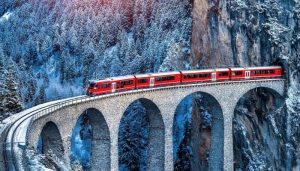
Cold temperatures, rain, and snow pose threats to communities from the north through the Midwest to the south.
On Friday, a hazardous winter storm swept through the northern US, bringing blinding snow in certain areas, freezing rain in others, and bitter cold temperatures accompanied by whipping winds across multiple states.
The extensive storm adds to a week of intense winter conditions across the US, resulting in fatal avalanches and perilous ice-covered roads. On Friday, a man was presumed dead in an avalanche in the Idaho backcountry, while a Wisconsin resident lost his life while clearing snow from his driveway.
Authorities reported on Friday the first cold-related death of the season, involving a suburban Chicago man who succumbed to cold exposure. The individual, whose identity remains undisclosed, was discovered on Thursday in the suburb of Schiller Park, according to the Cook County medical examiner’s office.
Following an autopsy conducted on Friday, the man’s demise was determined to be weather-related, and the medical examiner’s office categorized it as an accident.
Extensive flight disruptions occurred, with US airlines canceling over 2,000 flights, as reported by the flight-tracking website FlightAware. Additionally, more than 7,000 flights encountered delays.
Near the Montana border in Idaho, two individuals were successfully rescued after being trapped in an avalanche Thursday afternoon. Unfortunately, a third man remained missing and was presumed dead. The US Air Force played a role in the search and rescue efforts. The region had been under an avalanche danger warning for several days.
This incident in Idaho occurred just a day after the first avalanche-related death of the season was reported in California on Wednesday. At a Lake Tahoe ski resort, an avalanche engulfed four individuals, resulting in one fatality.
In Wisconsin, the Milwaukee County Medical Examiner’s office announced on Friday afternoon that it was probing the death of a 69-year-old man who became unresponsive while using a snow blower in Franklin, a suburb of Milwaukee. No additional information was disclosed.
Blizzard warnings were declared in certain locations, encompassing southwestern Minnesota and the Green Bay area of Wisconsin. Predictions for the Milwaukee area indicated substantial snowfall extending into Saturday morning, accompanied by wind gusts reaching up to 40 mph (64 km/h).
Michigan residents faced power outages due to the storm, with over 130,000 customers reported without electricity, according to the PowerOutage tracking website.

In the Dakotas, the frigid temperatures took precedence. Bismarck, North Dakota, experienced -11°F (-24°C) on Friday morning, and forecasters cautioned that the weekend could worsen, potentially reaching -20°F (-29°C) by early Sunday.
Chicago anticipated several inches of snow throughout the weekend, coupled with wind chills significantly below zero. Concerns were raised for the increasing number of individuals relocated from the US-Mexico border—over 26,000 arrivals since last year. By Friday, dozens sought refuge in eight stationary “warming buses” to avoid sleeping outdoors while awaiting space in city-operated shelters.
Angelo Travieso, a Venezuelan who traveled by bus from Texas, donned a light jacket and sandals with socks after spending the night on one of the buses.
“I slept sitting because there is almost no space left,” he remarked. “The buses are also small, and you practically have to stay inside because of the heating, as it is deadly cold outside.”
In response to the severe cold weather, Mayor Brandon Johnson announced the city’s decision to temporarily halt the enforcement of a 60-day cap on shelter stays for asylum seekers, extending this measure through at least January 22.
On Friday morning, temperatures in Montana dipped below 0°F, with wind chills plummeting as low as -57°F (-49°C) in areas along the eastern edge of the Rocky Mountains and in the central part of the state.
Tyson Ropp, at the Double Cross Cattle Company near Roberts, Montana, used an axe to break through inches of ice covering a stock tank, ensuring his bulls had access to water. He employed a feed truck to distribute extra hay for his cows, a routine he planned to repeat later in the day.
Anticipating an overnight drop to -28°F (-33°C), Ropp mentioned spreading straw on the ground, away from the wind, to provide a place for the cattle to rest and stay dry.
“It’s going to get pretty chilly tonight,” he remarked. “We’ve got a couple of hidey holes they can get into and bed down, hunker down together, and stay warm.”
Other parts of the northeast faced concerns of flooding. Emergency responders assisted in evacuating residents from their homes in Paterson, New Jersey, early Friday as the Passaic River began to overflow. The combination of the new storm and one earlier in the week raised flooding concerns in Maine and New Hampshire as well.
The southern regions were not exempt. Severe storms, featuring winds reaching 70mph (113 km/h), swept across Mississippi.
Arctic air is anticipated to reach the southern states by the weekend. The Mississippi Emergency Management Agency urged residents to prepare for ice, extremely low temperatures, and the potential for prolonged power outages. In anticipation of plummeting temperatures over the weekend and the possibility of sleet and snow early next week, Louisiana Governor Jeff Landry declared a state of emergency on Friday.
On Friday, Texas Governor Greg Abbott urged residents of the state to prepare as well. Temperatures are expected to only reach into the 30s from Sunday through Tuesday, with ice anticipated on Monday. Despite this, Abbott assured that the cold and ice “will not be anything close to what we experienced during winter storm Uri” in February 2021, which led to over 3 million Texans losing power.
Concerns for the homeless were shared by volunteers and city leaders in various locations. Portland, Oregon, more accustomed to winter rain, was anticipating snow. Tyrone McDougald, sorting through racks of warm clothes at a homeless service center on Thursday, wore a long-eared, leopard-style hat. Already layered up, he grabbed two more coats to help endure the bitter cold snap approaching the northwest.



